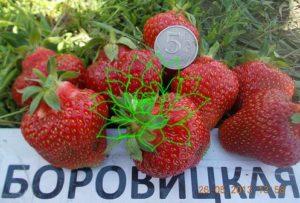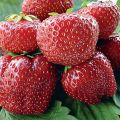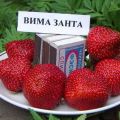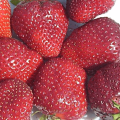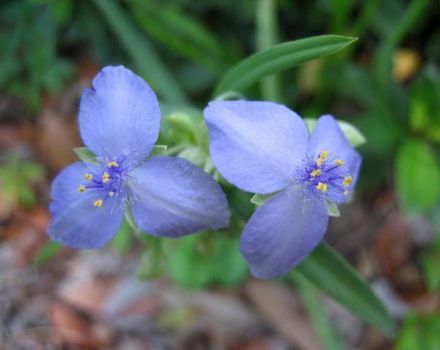Description and characteristics of Vima Ksima strawberries, cultivation and reproduction
Large-fruited strawberry Vima Ksima can be grown in almost all regions. The berries have good taste characteristics and retain their presentation for a long time, which allows transporting berries over long distances.
Content
- 1 Characteristics and description of the Vima Xima variety
- 2 Origin and growing regions
- 3 Positive and negative sides of strawberries
- 4 How to grow a variety correctly?
- 5 Landing technology
- 6 The nuances of strawberry care
- 7 Protection from pests and diseases
- 8 Breeding varieties
- 9 Collection and storage of strawberries
Characteristics and description of the Vima Xima variety
The culture is distinguished by the large size of the berries and the taste, which have their own unique shades of strawberries mixed with strawberries. The Vima Xima strawberry has positive characteristics and the following description:
- belongs to the mid-late type;
- the crop can be harvested as it ripens, but only once;
- from one bush you can get a harvest of up to 800 grams;
- the berries are large, on average up to 50 grams;
- the fruits are dark red and have a persistent aroma;
- the bushes are powerful, erect, however, during the ripening period of the berries, they gradually lean towards the ground;
- whisker formation is weak;
- leaves are large, dark green;
- developed root system;
- well tolerates the period of diseases and low temperatures.
The fruits can be used both for fresh consumption and as preparations for the winter. The dense skin allows strawberries to be stored and transported for further use over long distances.
Origin and growing regions
The crop is not a remontant variety, bred by Dutch breeders in 1981. It appeared in our regions relatively recently, in 2013, but it is very popular among gardeners.
Feels good in the Central region (Moscow, Bryansk, Ryazan, Tula, Smolensk, Vladimir regions). However, with proper planting and regular maintenance, it can grow and bear fruit in other regions.
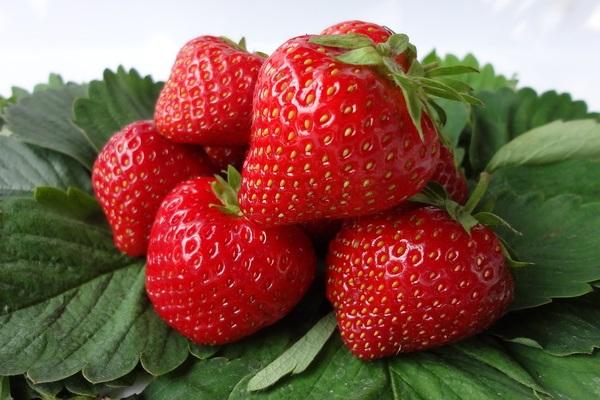
Positive and negative sides of strawberries
The strawberry variety has the following positive and negative qualities:
| Benefits | disadvantages |
| Good yield of the variety | Excessive moisture can lead to empty berries inside |
| Heat resistance | For long-term storage, it is allowed to change the container, otherwise it will be damaged |
| The fruits are large, the pulp is sweet | Powdery mildew prone to disease |
| Undemanding to soil | |
| Suitable for long-term cultivation |
Also, one of the advantages of the variety is its resistance to low temperatures and ease of harvesting, since the berries are visible from afar.
How to grow a variety correctly?
Like any type of crop, strawberries require compliance with the rules of cultivation. In addition to watering and fertilizing, it is necessary to correctly determine the planting site and possible neighbors.
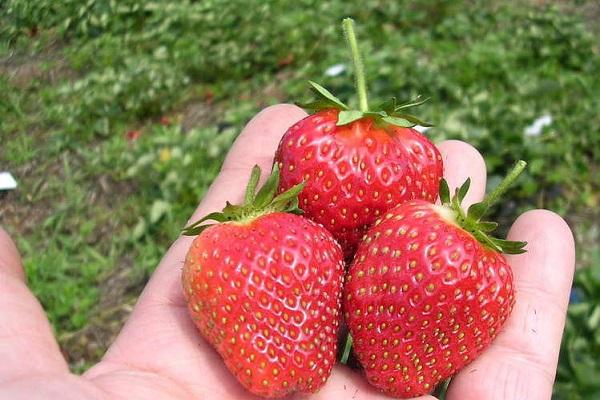
Landing dates
Strawberries are planted most often in the spring. After the snow melts, the seedlings are planted in the ground and covered with a film. Without the use of a film, seedlings are planted only after the soil warms up.
In the fall, it is also possible to plant a culture; this type of procedure is carried out in mid-September, so that the plant has time to root well before the onset of the first frost.
Preparation of planting material
When choosing seedlings, you must pay attention to the following criteria:
- the roots of the seedling should be well developed, without rot and damage;
- the seedling should have 3-5 leaves without visible damage;
- the core must be pink with a diameter of at least 20 mm;
- if greenhouse seedlings are used, open the greenhouse regularly for hardening several weeks before planting.
Before planting in open ground, it is necessary to treat the plant with an antiseptic, this action will reduce the risk of diseases.
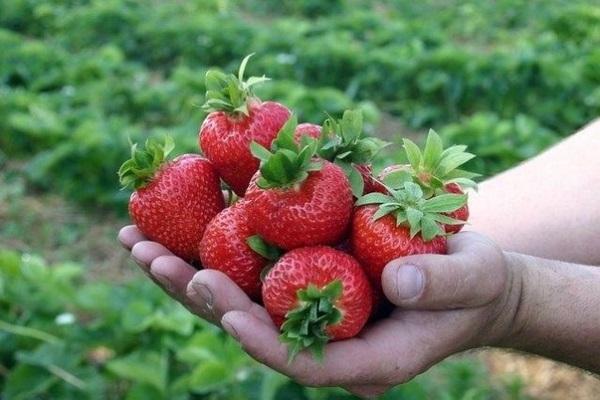
Site selection and preparation
Strawberries prefer an open area without shade. Land plots with trees and shrubs are not used. The soil should be of neutral acidity with a lot of nutrients. It is recommended to plant oats on the site a year before planting, it saturates the soil with substances necessary for strawberries.
Before planting, the soil must be prepared:
- remove grass and roots;
- loosen the soil;
- fertilize with superphosphate and humus.
Planting is carried out only after the soil has settled.
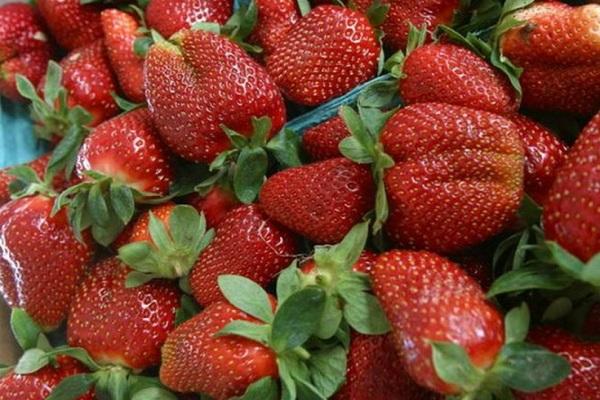
Landing technology
To plant seedlings, you must perform the following sequence of actions:
- fluff the prepared soil area;
- make holes up to 10 cm deep;
- the distance between the holes is 20-30 cm;
- the seedling is lowered into the hole, the roots are straightened and sprinkled with soil on top;
- the planted seedlings are watered.
A distance of up to 40 cm must be maintained between rows.
The nuances of strawberry care
Strawberry belongs to a variety of unpretentious crops. With proper care, it begins to bear fruit in the first year after planting. However, full fruiting begins from the second year after planting seedlings in the ground.
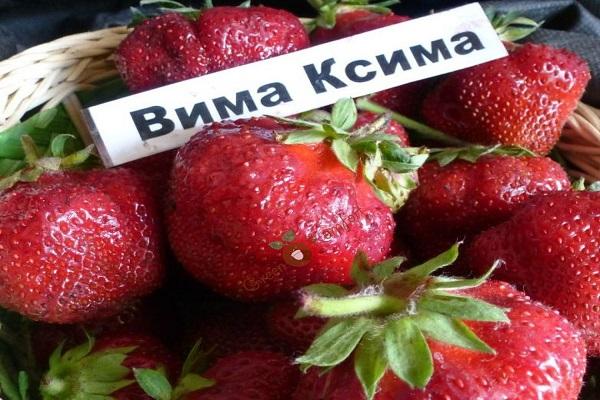
Watering, weeding and loosening
Strawberries love moist soil. Lack of moisture leads to the appearance of diseases and reduced yields. Watering strawberries is recommended every three days. If the soil retains moisture, the period between irrigations increases, as otherwise damage to the berries and the root can form. In hot weather, drip irrigation is used.
Weeding of the site is carried out if necessary. The roots of the culture are placed in the upper layers of the soil, therefore, it is recommended to remove most of the weeds by hand.
Loosening of the soil is carried out before each watering, with the help of this procedure the soil is saturated with oxygen, and the plant develops better.
Important. After planting seedlings, the first inflorescences are removed. This is necessary in order for the plant to grow stronger and to form larger ovaries.
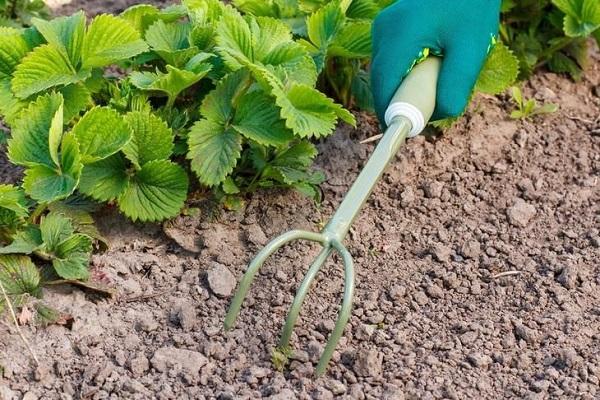
Fertilization
The crop prefers nutrient soil, therefore it is recommended to observe the following fertilization algorithm:
- potash fertilizers are applied before flowering;
- at the time of the formation of inflorescences, it is necessary to water with a solution of urea (1 glass per 10 liters), avoiding the root area;
- after the inflorescences fall, chicken droppings are used, dissolved in water (1 kg per bucket of water);
- after harvesting, mineral fertilizer and humus are applied.
Fertilizers must be applied carefully, avoiding contact with inflorescences and leaves.
Mulching
Mulching reduces the risk of weeds and retains moisture. The first layer of mulch is used immediately after planting the seedlings in the ground. For this, humus and sawdust are mixed in equal proportions. The mulch layer must be changed after 3-4 weeks.
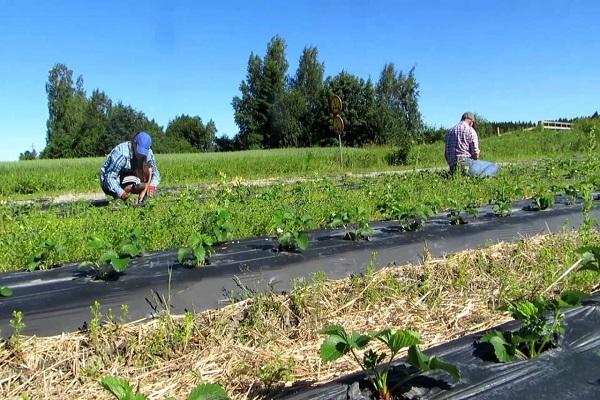
Protection from pests and diseases
Vima Ksima variety is resistant to various diseases. However, with improper care, the following types of diseases can occur:
- Powdery mildew - manifests itself as a white bloom on leaves and shoots, when a disease occurs, damaged areas are removed. Damaged bushes are sprayed with Bordeaux liquid (1%).
- White rot - manifests itself during the period when fruits are ripening. A white bloom forms on the berries, the fruit becomes watery. Damaged berries and shoots are removed, the plant is sprayed with "Derosal".
Among the pests, it is necessary to highlight:
- Strawberry nematode - manifests itself in the form of a small caterpillar, which damages the fruit and stems of the plant, leading to spoilage. To eliminate the pest, a solution of copper sulfate is used.
- Strawberry mite - the pest damages the leaves of the bushes and leads to a decrease in yield, the first symptoms of infection are the formation of cobwebs on the bushes. For treatment, a strong decoction of onion peels is used.
- Slugs - very often they damage ripe berries. To eliminate pests, superphosphate is used, which is sprayed between the beds.
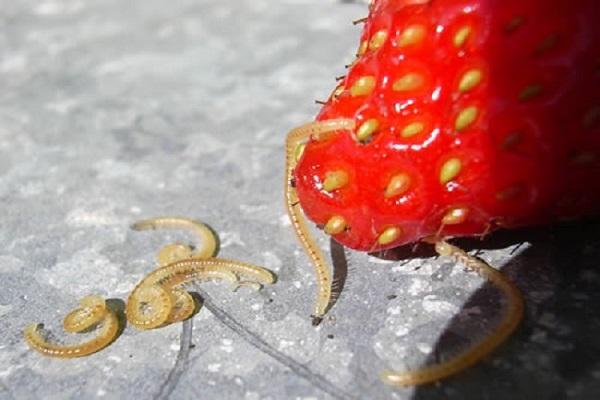
Ignoring diseases on the bushes very often leads to a complete loss of yield and further death of the plant.
Important. In order to prevent the risk of contamination of strawberries with pests in the next season, the bushes are mowed in the fall after harvest.
Breeding varieties
The plant can reproduce in three ways:
- Division of the bush - the mother bush is divided into several parts and immediately transplanted into the open ground.
- Whiskers - several strong bushes are selected for reproduction, from which inflorescences are removed during the summer. The released mustache is buried in and after the roots appear, they are transplanted to a new bed.
- Seeds. This method is the most difficult. To obtain seeds, several ripe berries are selected without damage. The berries are crushed to a porridge state and washed. The resulting seeds are dried and planted in special containers for seedlings.
The most commonly used method of sprouting a mustache, this type of reproduction allows you to quickly receive seedlings without harm to the mother bush.

Collection and storage of strawberries
Strawberries ripen consistently, so up to 8 harvests occur in one season. The strawberries are collected in wooden boxes and stored in a cool place. In this state, the berries can last up to 4-5 days. If it is necessary to transport the crop over long distances, it is recommended to pick strawberries 2 days before full ripening.
The Vima Xima culture is renowned for its berry size and flavor. Berries contain all useful components for the human body, therefore they are very often used as a fresh product, as well as for preparations for the winter. The growing process does not require certain skills, it is enough to follow the standard rules for caring for strawberries.
